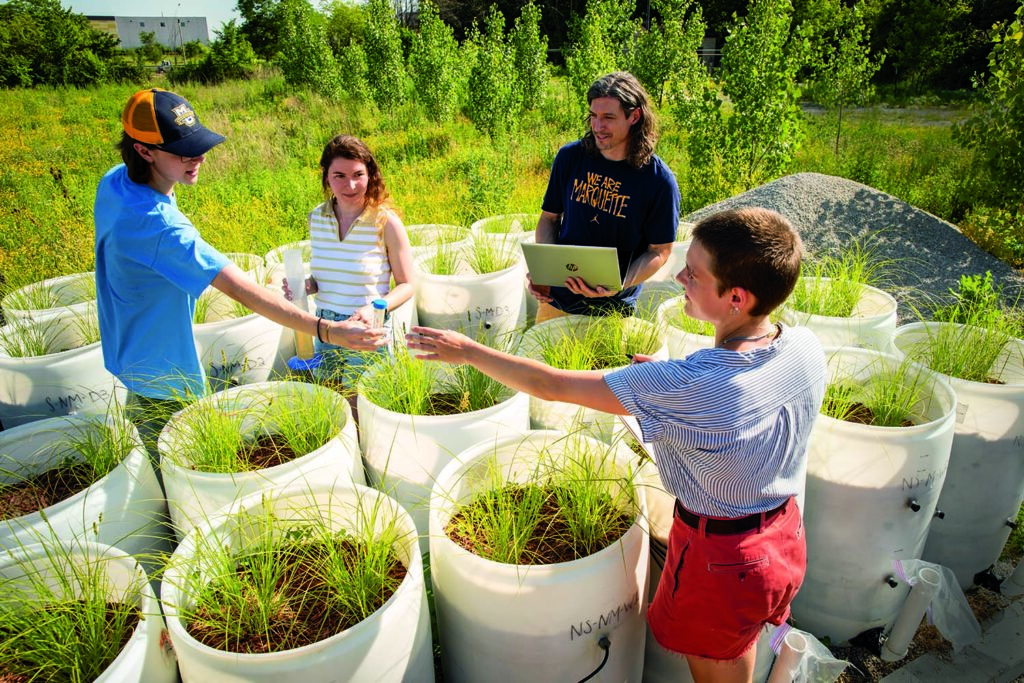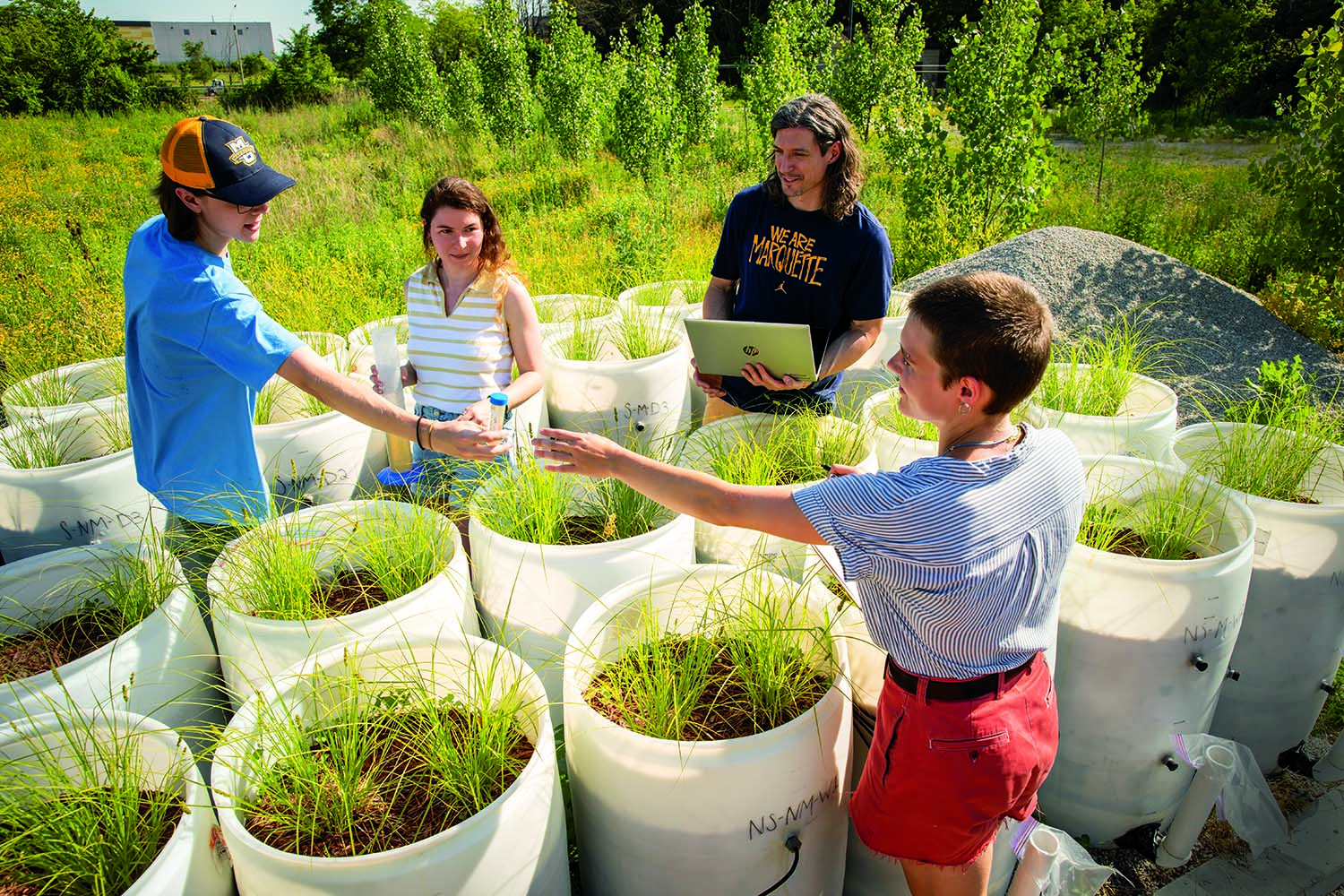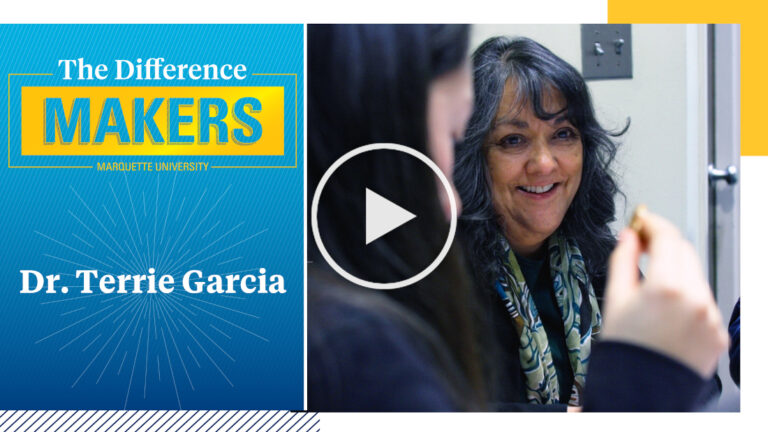Dr. Anthony Parolari plants his research lab at an unused brownfield site in the city.

By Sarah Koziol, Arts ’92
In 2016, the city of Milwaukee began an environmental cleanup of a 3-acre brownfield site near North 31st Street and West Capitol Drive. Today, the reimagined space — aptly called Green Tech Station — captures more than 100,000 gallons of stormwater every time it rains, thanks to a green infrastructure system of 440 trees, a 20,000-gallon underground cistern, bioswales, native prairies and wetlands, and more. A long list of partners including Marquette use the site for research, product demonstration and testing, and as an outdoor classroom.
Restoration of urban green spaces has gained footing nationally as a strategy to offset ecological effects of urban development. But despite this momentum, green infrastructure performance is highly variable and uncertain, according to Dr. Anthony Parolari, assistant professor of civil, construction and environmental engineering.

Building on previous research in which he monitored the effects of soil types and hydrology on nutrient cycles in green infrastructure, Parolari has built a pilot-scale field experiment at Green Tech Station to test and compare eight bioretention design and maintenance strategies. He is testing whether soil design, vegetation management and irrigation strategies can be used together to achieve desired water-quality outcomes. He will analyze the data collected from the experiments to test hypotheses related to green infrastructure performance, which he hopes will lead to guidelines on best practices for design and maintenance.
“Stormwater pollution causes billions of dollars per year in lost recreational use, reduced property values, and increased costs of endangered species recovery and drinking water treatment,” Parolari says. “Our research focuses on understanding the pollutant removal performance of these green infrastructure systems and will test the effect of combining commonly used design strategies — soil amendments, water management and vegetation management.”



